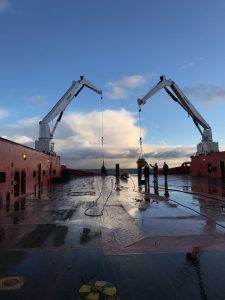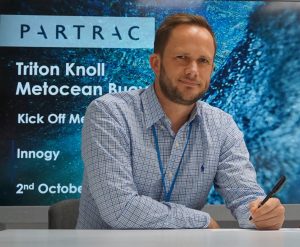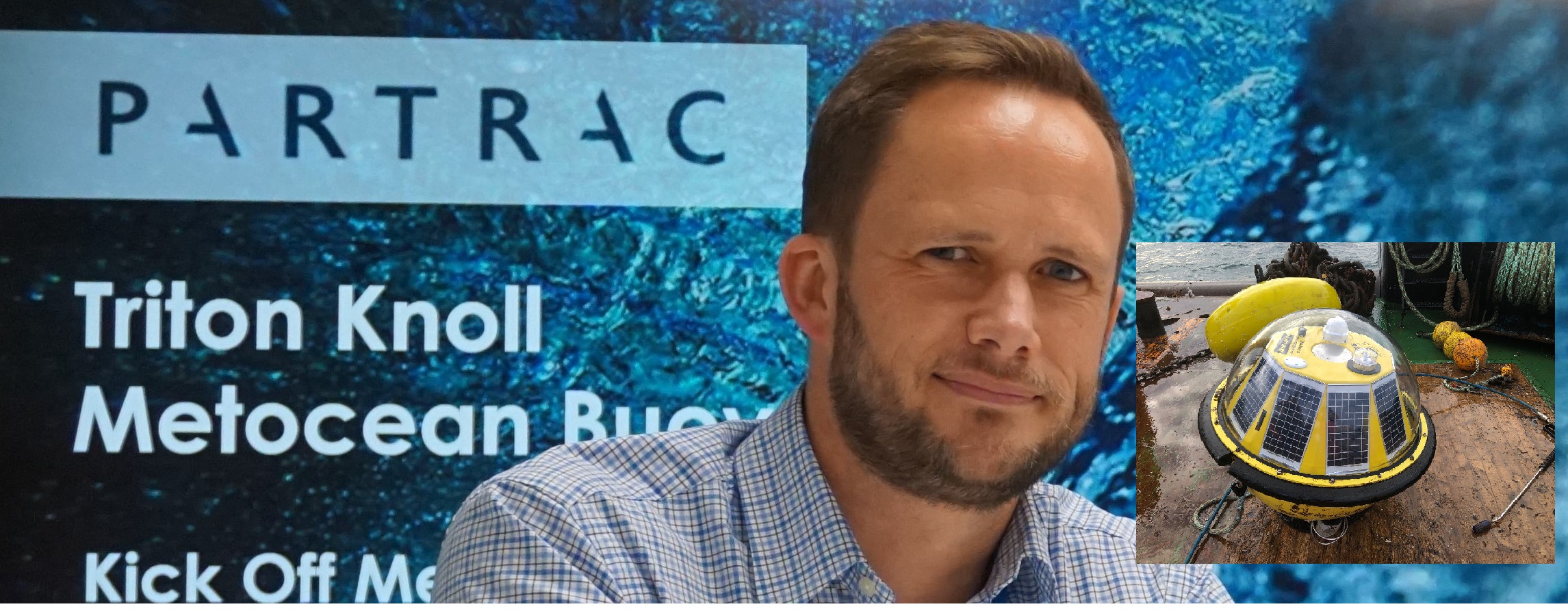

Triton Knoll Offshore Wind Farm has contracted UK marine specialists Partrac to supply, install and maintain navigation and metocean(1) equipment as the project prepares for offshore construction in January 2020.
Partrac will supply and install 12 buoys to demarcate the giant offshore construction site and act as navigation aids to mariners.
It will also supply, install and maintain two metocean buoys which are designed to gather information about offshore conditions, helping support operational decision-making during the construction phase.
Partrac is a UK-based coastal and marine geoscience company, with offices in north east England as well as Scotland and Devon and is a leading expert in the provision, operation and maintenance of the highly sensitive offshore equipment. Partrac have provided metocean and buoy services for the offshore wind industry for the past decade.
Announcing the contract award, Julian Garnsey, Project Director for Triton Knoll and innogy, said “Completing construction of Triton Knoll safely depends on having excellent management of the offshore site area which totals well over 50 square kilometres. This contract with Partrac is a critical part of that management system.”
“It’s very encouraging for the UK’s future in global offshore wind that a home-grown company is able to provide such critical and specialist support for Triton Knoll. Helping develop that expertise is important to Triton Knoll, and so we are very pleased to be working with Partrac to further develop the UK capabilities in this sector.”
Specifically, Partrac will provide, install, maintain and remove all equipment over the course of the offshore construction activity, as well as providing the datalink necessary to support the sharing of metocean data.

Director Sam Athey said: “We are delighted to be providing real-time, safety critical wave and current data for Triton Knoll. The metocean data will be used daily to help plan, inform and increase the safety of hundreds of heavy lifts and personnel transfers, plus boulder clearance, subsea and cable lay operations during it’s construction phase.”
Triton Knoll is a state-of-the-art 857MW offshore wind farm, consisting of 90 of the world’s most powerful turbines and representing a significant investment in new UK energy infrastructure. Located 32km off the Lincolnshire coast, Triton Knoll is the largest offshore wind farm currently in construction by innogy and when fully operational will be capable generating renewable energy equivalent to the needs of over 800,000 typical UK households.(2)
The project is owned by innogy (59%), J-Power (25%) and Kansai Electric Power (16%), with innogy managing the construction as well as the long-term operation and maintenance works, on behalf of its project partners.
Ends
(1) Metocean background and information
12 Navigation buoys, consisting of five Cardinal Marks and seven Special Marks, will be strategically located around the boundary of the construction site and will be used to highlight the location of the Triton Knoll Offshore Wind Farm to mariners. In addition, the two Metocean buoys are designed to gather important information about wave and surface current conditions, including wave heights, direction and frequency, water temperature, surface current speed and direction.
The information gathered will support operational decision-making during the construction phase.
(2) Energy Generation
It is estimated that the average annual generation expected at the site could be equivalent to the approximate domestic needs of an expected minimum of 800,000 average UK households.
Energy predicted to be generated by the proposal is derived using wind speeds monitored in the local area and correlated with long term reference data. The energy capture predicted, and hence derived homes equivalent figure may change as further data are gathered.
Equivalent homes supplied is based on an annual electricity consumption per home of 4100 kWh. This figure is supported by recent domestic electricity consumption data available from The Digest of UK Energy Statistics and household figures from the UK National Statistics Authority.

